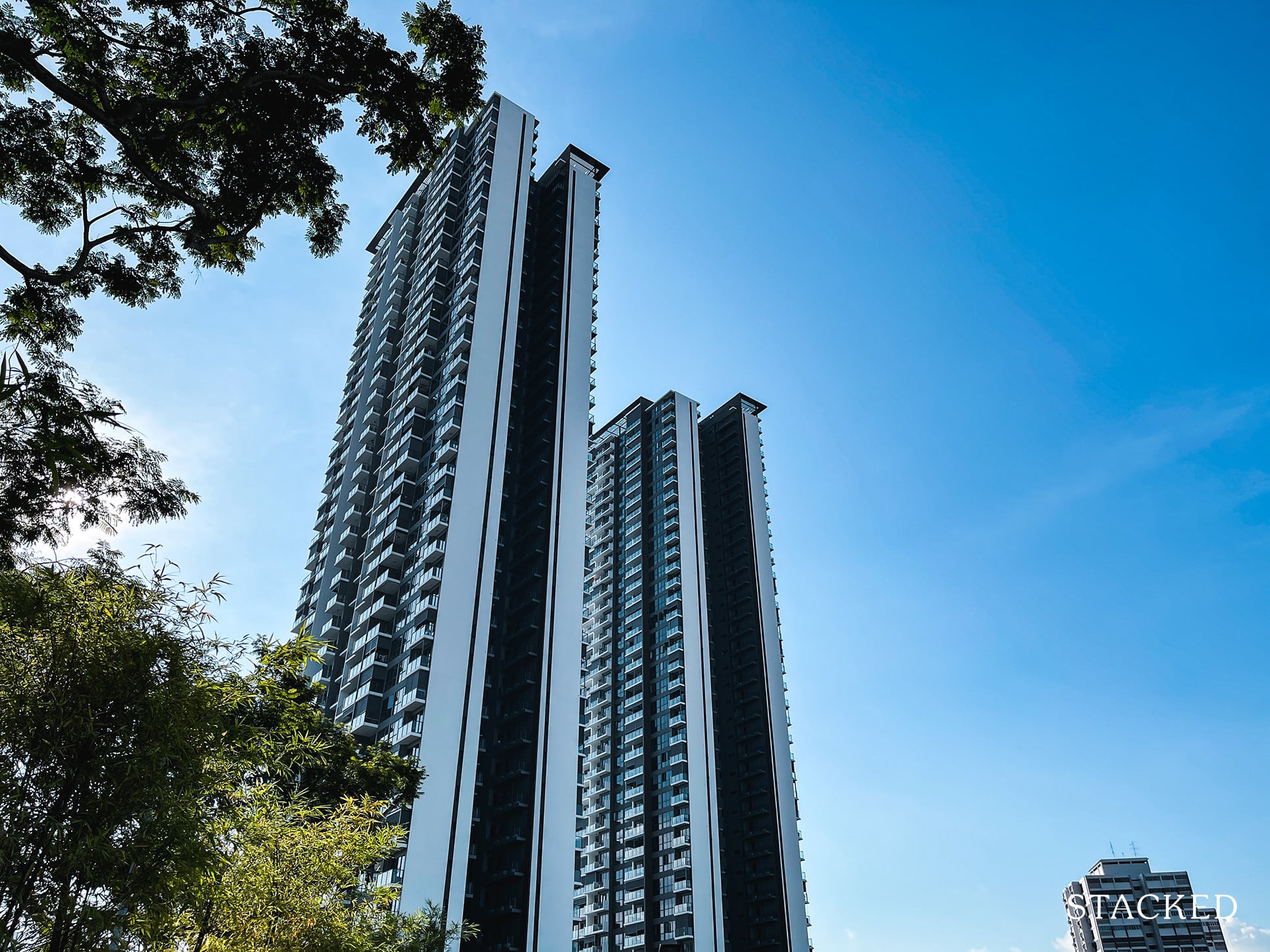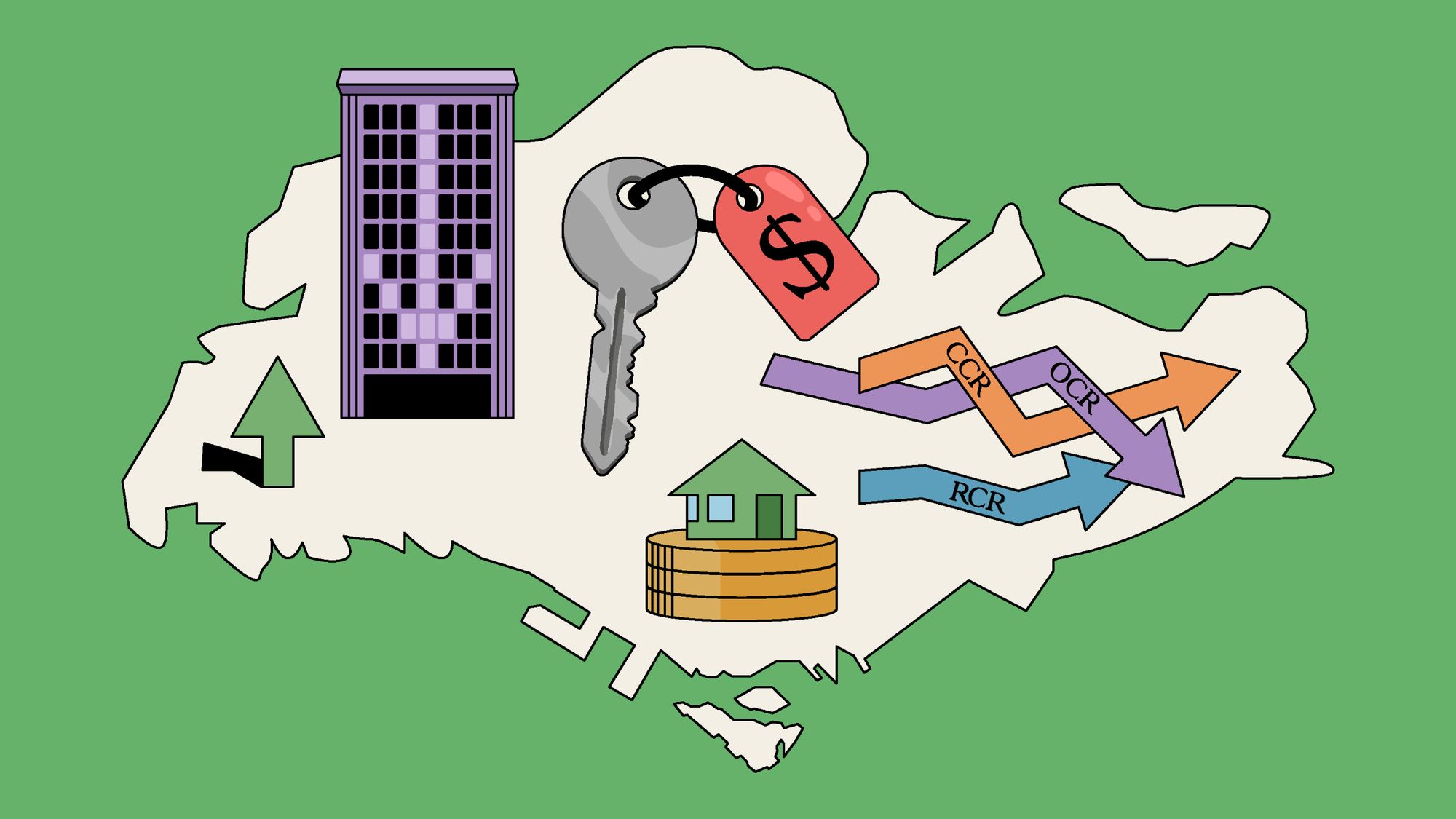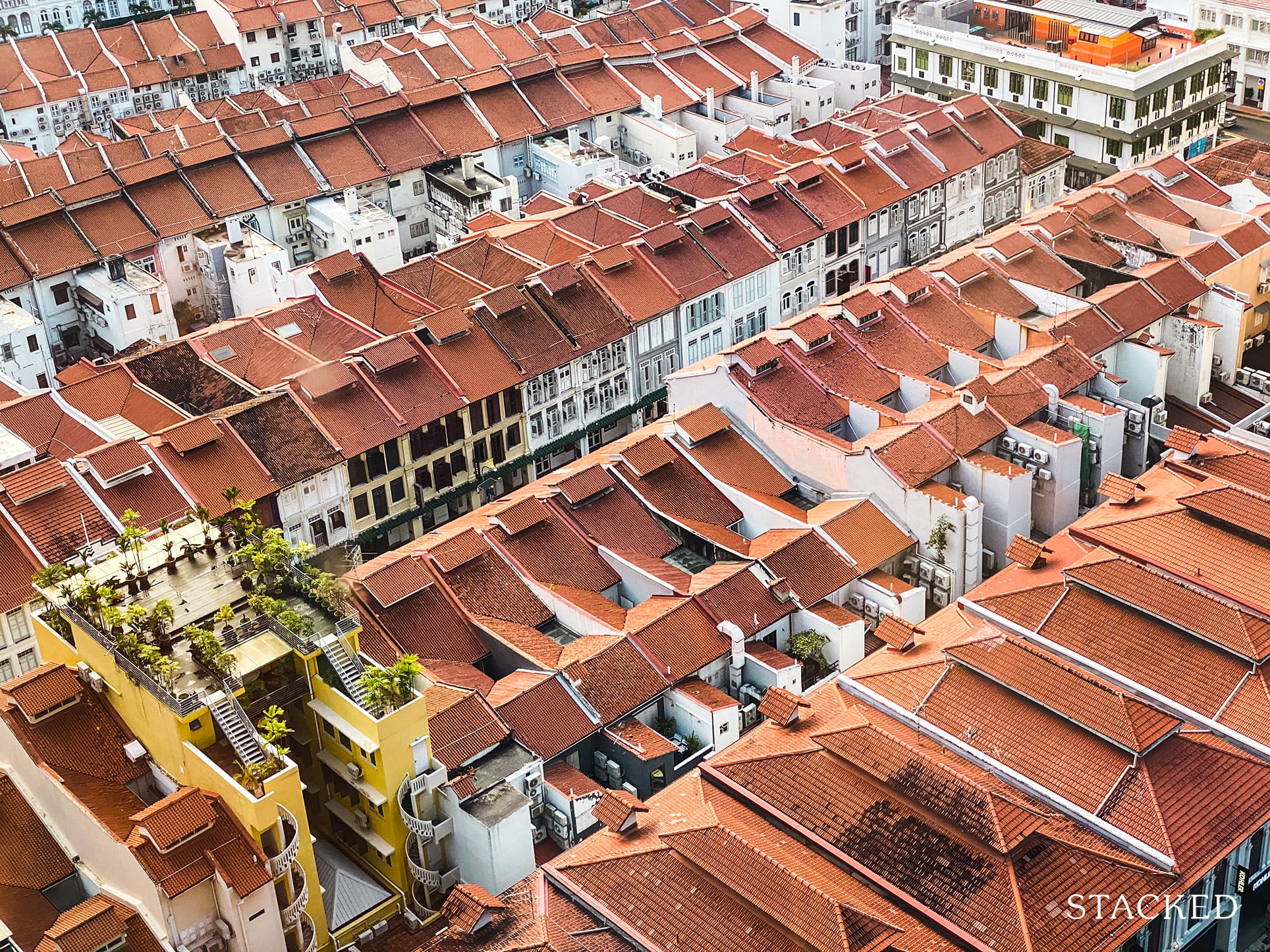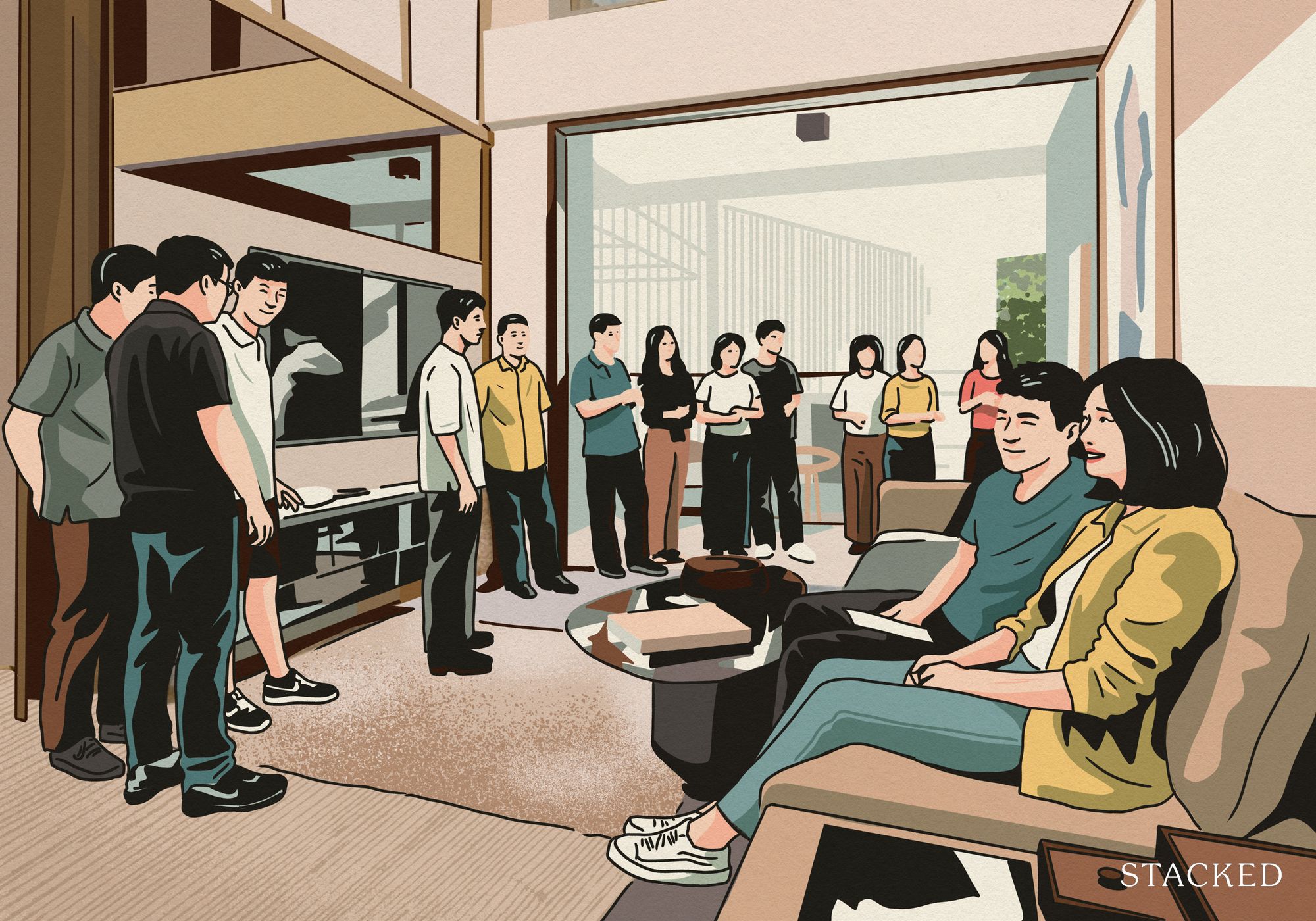Can A Leasehold Landed Property Be Profitable? (And Some Other Surprising Examples)

Get The Property Insights Serious Buyers Read First: Join 50,000+ readers who rely on our weekly breakdowns of Singapore’s property market.
A seasoned content strategist with over 17 years in the real estate and financial journalism sectors, Ryan has built a reputation for transforming complex industry jargon into accessible knowledge. With a track record of writing and editing for leading financial platforms and publications, Ryan's expertise has been recognised across various media outlets. His role as a former content editor for 99.co and a co-host for CNA 938's Open House programme underscores his commitment to providing valuable insights into the property market.
We tend to fall back on common sayings or beliefs when it comes to comparing properties in Singapore. These range from the age-old belief in the supremacy of freehold condos, to assumptions about region and size.
But here’s the thing about property, the variance can be huge as there are just so many variables to think about.
For example, the entry price matters a lot, but so does the length of time that you hold the property. Other less visible factors could be the amount of renovation work done or just the type/size of the unit, as compared to the rest of the units in the development.
As such, while it is useful to know what are the usual factors for a profitable development, sometimes this can vary too depending on the unit. In other words, you shouldn’t overlook certain properties simply due to certain blanket rules.
Here are some examples that go against the grain:
*We tried as much as possible to look for transactions that were bought and sold within a close time period and price point to minimise the effect of property market timing and price. Do note that while these are just singular transactions (which may have their nuances that are not disclosed, like renovation works, etc.), this is purely to show that you shouldn’t always close your options due to old assumptions. Sometimes you have to dig a little deeper, to see why this could be an astute purchase.
1. Leasehold in a fringe area, versus freehold in a prime area
This is a typical example of freehold versus leasehold property, where most people would assume that a freehold property would be a superior choice.
Let’s say you have around $1.7 million to purchase a property, and you find two options: one is leasehold, in a non-central area, whilst the other is freehold, in a location near the Botanic Gardens. It should be a no-brainer right?
But check out these two transactions below:
| Project Name | Size | Tenure | Type | Bought Price | Bought Date | Sell Price | Sell Date | Profit |
| THE CLEMENT CANOPY | 1,346 | 99 yrs from 09/03/2016 | Apartment | $1,707,000 | 25-Feb-17 | $2,450,000 | 28/2/23 | $743,000 |
| THE ASANA | 635 | Freehold | Apartment | $1,690,920 | 22-Jan-18 | $1,500,000 | 18/8/23 | -$190,920 |
The freehold condo actually fared much worse, and saw a loss. The two properties above are the Clement Canopy, a leasehold condo completed in 2019, and The Asana is a freehold condo completed two years earlier.
Besides lease status, Clement Canopy is also disadvantaged with regard to public transport. It’s not within easy walking distance of an MRT station, whereas you can walk from Asana to Botanic Gardens MRT station (CCL, DTL). Asana is also much more exclusive, with just 48 units versus the mid-sized (505 unit) Clement Canopy.
Regardless, the Clement Canopy unit comes out way ahead, with annualised returns coming to an impressive 6.2 per cent, while the Asana transaction was a hefty loss.
This may have something to do with Clementi’s strong access to schools like the NUS High School of Maths and Science, better access to NUS itself, etc., along with the wider range of day-to-day amenities in surrounding HDB enclaves. Regardless, it does show that a prime freehold property is not always the better choice.
2. Boutique versus large development
More from Stacked
Why Emerald Of Katong Sold 99% Of Units In Just 2 Days: We Break Down The Sale Prices
Here’s a little-known way to gauge just how attractive a new condo really is: check how many property agents have…
Boutique projects make many investors nervous: they’re notorious for volatile price movements because of the sparse transctions, and some buyers just don’t believe the bare-bones facilities are appealing. As such, there’s a strong preference for larger projects these days; particularly in the OCR.
So again, we made a comparison between two projects, with units at a roughly similar price of around $800,000. Here’s a comparison between a freehold boutique unit, and a bigger leasehold launch:
| Project Name | Size | Tenure | Type | Bought Price | Bought Date | Sell Price | Sell Date | Profit |
| ASCENT @ 456 | 753 | Freehold | Apartment | $800,787 | 12-Jan-17 | $1,060,000 | 5/1/23 | $259,213 |
| THE GLADES | 495 | 99 yrs from 21/01/2013 | Condominium | $795,100 | 11-Oct-16 | $745,000 | 9/5/22 | -$50,100 |
Ascent@456 is the boutique condo here; it’s a small project with just 28 units, right alongside Balestier Road. Meanwhile, the larger project is The Glades, a 726-unit condo close to Tanah Merah MRT.
From the results, Ascent@456 clearly comes out ahead with annualised gains of 4.8 per cent, while the Glades saw a losing transaction. So although the current market shows a strong preference for larger projects, don’t always assume that boutique projects are at the losing end. There could be other reasons that support why some boutique condos could be profitable.
In this example, sometimes it is less about the type of development and more about the entry price. This unit was part of a bulk purchase in January 2017, where they were sold at a discount at an average of $1,000+ psf (compared to the launch prices of $1,400+ psf). As such in 2023 when prices picked up, this unit was able to be sold at a profit of $259k instead.
3. Leasehold landed versus a condo development
Leasehold landed properties have a troubled reputation in Singapore. Often seen as distinct from “true” landed, these projects tend to be derided for issues like closely packed units (if it’s cluster housing), and small prospective buyer pools (it’s assumed that affluent buyers want an intergenerational freehold asset). As such, most property buyers will swear by regular condos instead of a leasehold landed project.
So here’s an example of a comparison between a leasehold landed unit below, and a “regular” condo where the bulk of transactions were profitable. Note that in this case, the condo was cheaper as you’d expect ($3.8 million), whilst the leasehold landed around $4.3 million.
| Project Name | Size | Tenure | Type | Bought Price | Bought Date | Sell Price | Sell Date | Profit |
| VICTORIA PARK VILLAS | 2,352 | 99 yrs from 23/09/2013 | Semi-Detached House | $4,382,000 | 15-Jul-17 | $5,800,000 | 14/6/23 | $1,418,000 |
| MARTIN MODERN | 1,421 | 99 yrs from 28/09/2016 | Condominium | $3,840,000 | 25-Jan-18 | $3,970,000 | 18/12/23 | $130,000 |
Victoria Park is the leasehold landed project in question, located close to Holland V. Martin Modern, located in River Valley, was the leasehold condo used for comparison. Both are fairly strong locations, with Martin Modern being a bit more central, whilst Victoria Park gets the benefit of a low-density, landed area.
Martin Modern in particular was a surprising one given that this condo has recorded strong profits for the first owners of the property. In fact, 3 owners here have even made profits of more than a million!
But Victoria Park actually comes out ahead with annualised returns of 4.9 per cent, whilst its Martin Modern counterpart had an almost flat price movement.
This highlights the need for a more detailed walkthrough when shortlisting properties
While there may be a kernel of truth in some assumptions, property is a very individualistic type of asset. If you’re in doubt, you can reach out to Stacked for a more comprehensive look, and for specific comparisons between homes you’ve shortlisted.
If you’d like to get in touch for a more in-depth consultation, you can do so here.
Ryan J. Ong
A seasoned content strategist with over 17 years in the real estate and financial journalism sectors, Ryan has built a reputation for transforming complex industry jargon into accessible knowledge. With a track record of writing and editing for leading financial platforms and publications, Ryan's expertise has been recognised across various media outlets. His role as a former content editor for 99.co and a co-host for CNA 938's Open House programme underscores his commitment to providing valuable insights into the property market.Read next from Property Investment Insights

Property Investment Insights This 21-Year-Old Condo Didn’t Sell Out Initially, Yet Became A Top Performer

Property Investment Insights How A Once “Ulu” Condo Launched In 1997 Became A Top Performer

Property Investment Insights This 698-Unit Ang Mo Kio Condo Launched At The Wrong Time — And Still Outperformed Peers

Property Investment Insights These Resale Condos In Singapore Were The Top Performers In 2025 — And Not All Were Obvious Winners
Latest Posts

Editor's Pick 2025 Year-End Review Of The Singapore Property Market: What The Numbers Reveal

Editor's Pick How The HDB Resale Market Performed In 2025, And What It Means For 2026 Prices

Editor's Pick 4 Key Trends Reshaping Singapore’s New Launch Condo Market In 2026

Editor's Pick What I Only Learned After My First Year Of Homeownership In Singapore

Singapore Property News Why More Land Doesn’t Automatically Fix Housing In Singapore

On The Market Here Are The Cheapest 4-Room HDB Flats in Central Singapore You Can Still Buy From $490K

Editor's Pick Should We Buy An Old 99-Year Leasehold Condo To Live In: Will It’s Value Fall When The Lease Runs Out?

Editor's Pick I Reviewed A New Launch 4-Bedroom Penthouse At Beauty World

Property Market Commentary When Renting In Singapore Is The Smarter Move — And Buying Can Wait

Editor's Pick Why Singaporean Families Are Looking At This Landed Enclave From Around $4M

Singapore Property News Lentor’s First Condo Is Complete — The Early Profits May Surprise You

Editor's Pick A Wave Of New HDB Resale Supply Is Coming In 2026: Here’s Where To Find Them

Property Advice We Own A $800K 1-Bedder And A $1.1M 3-Bedder: Is It Possible To Upgrade To A 4-Bedder Condo?

On The Market These Are Some Of The Cheapest 5-Room HDB Flats Left In Central Singapore

Singapore Property News $281.2M in Singapore Shophouse Deals in 2H2025 — But That Number Doesn’t Tell the Full Story


